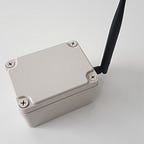Arduino MKRFOX1200 — Testing the new Sigfox Arduino
This a Arduino MKR1000 with a Atmel SAM D21 chipset and a Sigfox module.
Compare to others Arduino, this device is really ultra-low power.
Device available on Arduino store: https://store.arduino.cc/arduino-mkrfox1200
How to send our first “Hello World!” to Sigfox backend ?
1/ Get device ID and PAC
To be able to activate the device on Sigfox backend, we need to get device ID and PAC
Open Arduino IDE
Sketch > Include Library > Arduino SigFox for MKRFox1200
Tools > Board: “Arduino SigFox MKRFox1200”
Tools > Port: “/dev/cu.usbmodemXXXX (Arduino MKRFox1200)”
Copy/paste this code (details available here : https://www.arduino.cc/en/Tutorial/SigFoxFirstConfiguration)
#include <SigFox.h>void setup() {
Serial.begin(9600);while(!Serial) {};if (!SigFox.begin()) {
Serial.println("Shield error or not present!");
return;
}String version = SigFox.SigVersion();
String ID = SigFox.ID();
String PAC = SigFox.PAC();// Display module informations
Serial.println("MKRFox1200 Sigfox first configuration");
Serial.println("SigFox FW version "+ version);
Serial.println("ID = "+ ID);
Serial.println("PAC = "+ PAC);Serial.println("");Serial.println("Register your board on https://backend.sigfox.com/activate with provided ID and PAC");delay(100);// Send the module to the deepest sleep
SigFox.end();
}void loop() {
}
Then, open serial monitor
Finally, verify and upload code to the Arduino device.
You will have something like this:
2/ Activate your Arduino device on Sigfox Backend
Follow the instructions on: https://backend.sigfox.com/activate/arduino
3/ Send our first message “Hello World!”
With the following code, we can type the message we want to send:
#include <SigFox.h>
#include <ArduinoLowPower.h>void setup() {
Serial.begin(9600);
while (!Serial) {};if (!SigFox.begin()) {
Serial.println("Shield error or not present!");
return;
}
// Enable debug led and disable automatic deep sleep
// Comment this line when shipping your project :)
SigFox.debug();String version = SigFox.SigVersion();
String ID = SigFox.ID();
String PAC = SigFox.PAC();// Display module informations
Serial.println("MKRFox1200 Sigfox first configuration");
Serial.println("SigFox FW version "+ version);
Serial.println("ID = "+ ID);
Serial.println("PAC = "+ PAC);Serial.println("");Serial.println("Register your board on https://backend.sigfox.com/activate with provided ID and PAC");delay(100);// Send the module to the deepest sleep
SigFox.end();Serial.println("Type the message to be sent");
while (!Serial.available());String message;
while (Serial.available()) {
message += (char)Serial.read();
}// Every SigFox packet cannot exceed 12 bytes
// If the string is longer, only the first 12 bytes will be sentif (message.length() > 12) {
Serial.println("Message too long, only first 12 bytes will be sent");
}Serial.println("Sending "+ message);// Remove EOL
message.trim();// Example of message that can be sent
sendString(message);
}void loop()
{
}void sendString(String str) {
// Start the module
SigFox.begin();
// Wait at least 30mS after first configuration (100mS before)
delay(100);
// Clears all pending interrupts
SigFox.status();
delay(1);SigFox.beginPacket();
SigFox.print(str);int ret = SigFox.endPacket(); // send buffer to SIGFOX network
if (ret > 0) {
Serial.println("No transmission");
} else {
Serial.println("Transmission ok");
} Serial.println(SigFox.status(SIGFOX));
Serial.println(SigFox.status(ATMEL));
SigFox.end();
}
For example, type “Hello World!” then press Enter (or “Send” button).
So you will obtain this:
Now, go to your Sigfox backend: https://backend.sigfox.com/device/DEVICE_ID/messages
Here we go, you will see your message “Hello World!” (hexadecimal)
On this website, you can decode the data from Hexadecimal to string:
http://string-functions.com/hex-string.aspx
48656c6c6f20576f726c6421
Hello World!
